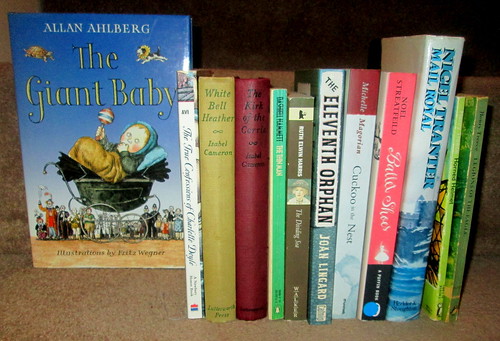 The Twelfth Day of July by Joan Lingard was first published in 1970, so it was probably written just as ‘The Troubles’ of Northern Ireland started to become really serious.
The Twelfth Day of July by Joan Lingard was first published in 1970, so it was probably written just as ‘The Troubles’ of Northern Ireland started to become really serious.
The book begins on the 7th of July, just five more days to go until the Glorious 12th, in the Jackson’s Belfast home they’re all counting the days until the members of the Orange Lodge bands will be marching wearing their smart purple and orange uniforms and playing their instruments, it’s the highlight of their year, commemorating the anniversary of the Battle of the Boyne. This year Sadie is taking part for the first time.
But the night before the big day the huge mural of King Billy on his white horse which is painted on the gable end of the Jackson’s house is daubed with green paint by some Catholic youngsters who live in a nearby neighbourhood. Sadie and her brother Tommy are incensed, and so begins a tit for tat battle between them and the boys they know to be the culprits. The youngsters are able to move quite easily between the two areas, something which was stopped by building a massive wall between them, to keep the two factions apart. It was still there when I visited Belfast in the mid 1990s, I suspect it might still be there.
Sadie Jackson is a great character and Kevin is obviously an admirer. This is the beginning of a series featuring them as a couple who are caught up in the religious sectarianism of the divided and violent Northern Ireland. I’m looking forward to reading the others.

 The Winter Visitor by Joan Lingard was first published in 1983.
The Winter Visitor by Joan Lingard was first published in 1983. Natasha’s Will by Joan Lingard was first published in 2020. It was a Federation of Children’s Book Groups’ Pick of the Year. I must admit that I’ve never heard of that group. It’s a very quick read at just 166 pages.
Natasha’s Will by Joan Lingard was first published in 2020. It was a Federation of Children’s Book Groups’ Pick of the Year. I must admit that I’ve never heard of that group. It’s a very quick read at just 166 pages.



